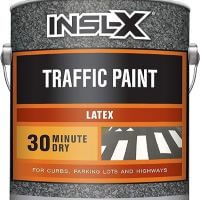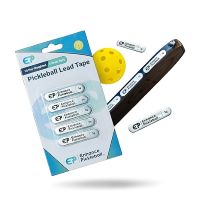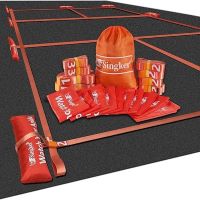Painting a pickleball paddle is a creative way to personalize your equipment and make it stand out on the court. In this blog, we are going to guide you on how to paint a pickleball paddle on your own.
Before explaining the procedure for painting a pickleball paddle, we are going to tell you whether you can paint your pickleball paddle yourself or not and which are the materials that you will require for painting a pickleball paddle. Please review the following blog post, acquire the necessary materials for painting a pickleball paddle, and proceed to paint your pickleball paddles according to the step-by-step instructions provided in this blog post.

You Might Also Like:
Can You Paint a Pickleball Paddle Yourself?
Yes, you can paint a pickleball paddle yourself, but it is essential to keep certain factors in mind to safeguard the paddle’s performance and adherence to the tournament’s regulations. Here are some key points to consider:
Tournament Regulations:
Pickleball tournaments frequently enforce specific regulations concerning paddle modifications, including painting. It’s worth noting that certain tournaments may have restrictions on specific types of paint or surface textures that could potentially enhance spin or impact the game dynamics.
Check the tournament regulations or guidelines to ensure that you comply with any restrictions on paddle customization, including painting.
Paint Type:
Choose the right type of paint for your paddle. Acrylic paint or enamel paint is commonly used for painting pickleball paddles.
Avoid using paint that adds texture or grip to the paddle’s surface, such as anti-skid paint, as it can alter the paddle’s performance and may not be allowed in tournaments.
Refrain from using reflective paint, as it can distract or hinder the vision of your opponents, teammates, or yourself during play.
Design Considerations:
Ensure that any designs or decorations you paint on the paddle are in good taste and not offensive or inappropriate.
Before adding any writing or pictures to your painted paddle, it is crucial to verify that they comply with the guidelines and regulations established by the tournaments or organizations in which you intend to participate.
Performance Testing:
Before using your painted paddle during gameplay, it is important to conduct performance tests to ensure that the paint does not adversely affect the paddle’s performance.
Once you have finished painting, it is crucial to evaluate the paddle’s weight, balance, and grip to ensure that it continues to provide comfort and align with your preferred playing style.
Remember, if you plan to participate in formal pickleball tournaments, it is essential to review the specific rules and regulations governing paddle modifications, including painting. By doing so, you can ensure that your painted paddle complies with the guidelines and does not lead to any unintended consequences during gameplay.
Materials Required for Painting a Pickleball Paddle
To paint a pickleball paddle, you’ll need the following materials:
Pickleball Paddle: The paddle you want to paint.
Sandpaper: To improve the paint’s grip on the paddle, use sandpaper to roughen the surface lightly. This creates a slightly textured area that enhances the paint’s ability to stick and stay in place.
Primer: Apply a primer designed for the paddle’s material to create a smooth base for the paint.
Acrylic Paint: Opt for acrylic paints of superior quality in the colors that you prefer. Acrylic paints are renowned for their durability and compatibility with various paddle surfaces.
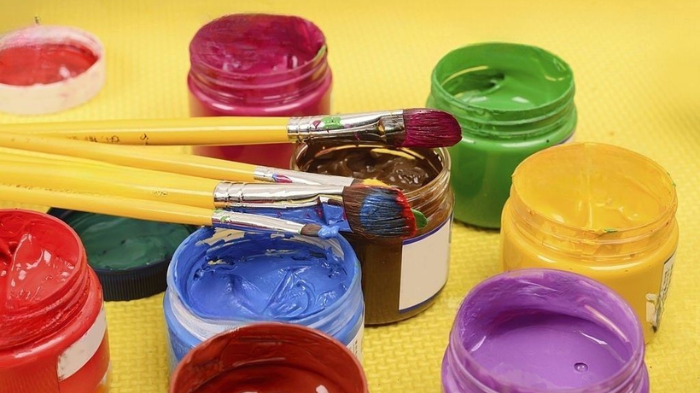
Paintbrushes: Acquire paintbrushes in various sizes to facilitate the creation of various effects and intricate elements in your painting.
Masking Tape: To safeguard areas that you wish to keep paint-free, such as the handle or edges, masking tape can be used as a protective covering.
Palette: During the painting process, you can use a palette or disposable plates to mix and hold your paint.
Water And Paper Towels: Keep water and paper towels nearby to clean your brushes and remove any excess paint by wiping them.
Clear Coat Or Varnish: Apply a clear coat or varnish specifically designed for paddle surfaces to protect the paint and enhance durability.
Drop Cloth Or Newspaper: Place a drop cloth or newspaper on your work surface to safeguard it from any paint spills or splatters.
Stencils Or Vinyl Decals(Optional): If you want to incorporate specific designs or patterns, it is recommended to utilize stencils or apply vinyl decals. These tools can assist you in creating well-defined shapes or logos with precision and clarity.
Steps for Painting a Pickleball Paddle
Here are the detailed steps for painting a pickleball paddle using the materials mentioned above in this blog:
Step 1: Prepare Your Workspace
Begin by preparing your workspace in a well-ventilated area. Cover your work surface with a drop cloth or lay out newspapers to safeguard it from any paint splatters or accidental spills.
Step 2: Prepare The Paddle Surface
Before painting, it is important to prepare the paddle surface. To start, gently rub the sandpaper on the surface of the paddle. This will create a slightly rough texture, which is important for the primer to stick well. Move the sandpaper in circular motions to ensure that the entire surface is even and smooth.
Step 3: Apply Primer
Take either a paintbrush or foam brush and apply a thin and even layer of primer to completely cover the entire surface of the paddle. Make sure to spread the primer smoothly and evenly, ensuring that every part of the paddle is properly primed without any areas left untouched.
The primer serves as a base coat, providing a smooth foundation for the paint and improving its adhesion to the paddle. Follow the drying instructions provided by the manufacturer to allow the primer to dry completely. This step is essential for achieving optimal results in the painting process.
Step 4: Choose Your Paint Colors
Decide on the color scheme and design you want for your paddle. Acrylic paints come in various colors, so select the ones that appeal to you. You can use a single color or multiple colors for your design.
Step 5: Prepare Your Paints
Take a small amount of each paint color and gently squeeze them onto a palette. The palette will serve as your mixing area where you can mix colors as needed. Be sure to leave ample space between each color to avoid unintentional mixing.
Step 6: Plan Your Design (Optional)
If you want to add a specific design to your paddle, take some time to plan it out. You can sketch the design on paper or use stencils or vinyl decals to create patterns. This step is optional, and you can also paint freehand if you prefer.
Step 7: Apply The Base Coat
To begin, select either a paintbrush or a foam brush. Then, use the brush you’ve chosen to apply an initial layer of your preferred color to the entire surface of the paddle. Please take your time during the painting process to ensure that you cover the entire surface of the paddle with the paint in an even and consistent manner.
Ensuring a smooth and uniform paint coat is vital to cover the entire paddle surface without leaving any areas uncovered or displaying uneven paint distribution. Allow the base coat to dry thoroughly before moving on to the next step. Allowing the paint sufficient time to completely dry is crucial to achieve the best possible results.
Step 8: Create Your Design
Once the base coat is dry, you can start adding your desired design using different colors of acrylic paint. Utilize smaller paintbrushes to incorporate intricacies and larger brushes for broader strokes. Take your time and be patient as you work on your design, ensuring that the colors mix well and the lines are clean.
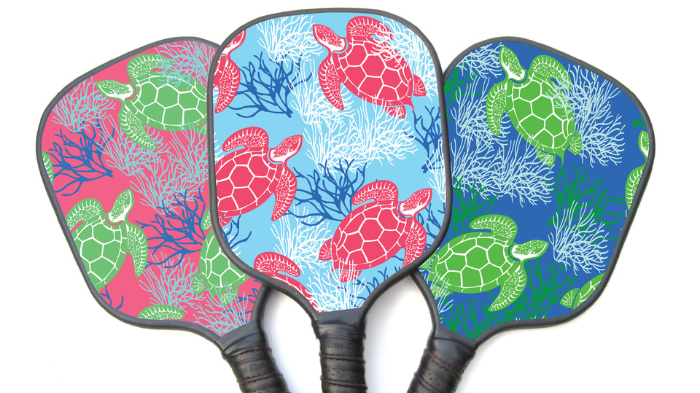
Step 9: Use Stencils Or Vinyl Decals (Optional)
If you prefer to use stencils or vinyl decals to create your design, secure them onto the paddle using masking tape. Make sure they are firmly in place before applying paint over them. Apply the paint using a brush or a sponge, and carefully remove the stencil or decal while the paint is still wet. This will leave a clean and crisp design.
Step 10: Allow The Paint To Dry
Once you have completed your design, allow the paint to dry completely. It is crucial to follow the drying time specified by the acrylic paint manufacturer.
Step 11: Apply A Clear Coat Or Varnish
To safeguard the painted design and achieve a glossy finish, coat the entire surface of the paddle with a clear coat or varnish. Take a clean brush or foam brush and use it to apply an even layer of clear coat or varnish, making sure to cover all areas of the paddle, including its edges.
Follow the instructions provided by the manufacturer regarding the number of coats needed and the recommended drying times. This will ensure optimal protection and a beautiful finish for your paddle.
Step 12: Clean Up And Let Dry
Afterwards, clean your brushes thoroughly with water and ensure that they are completely dry before storing them. Ensure that you dispose of any used materials properly, adhering to the appropriate waste disposal guidelines.
Allow the clear coat or varnish to dry completely before using the paddle. This step is crucial as it ensures that the paint is fully cured, providing maximum durability for your painted design.
That’s it! Following these detailed steps will help you to paint a pickleball paddle using the materials mentioned above in this blog. Remember to take your time, be creative, and have fun during the pickleball paddle painting process. Enjoy your customized pickleball paddle!
FAQs
It is recommended to use acrylic paints specifically designed for sports equipment. These paints provide durability and adhere well to the paddle surface.
Yes, painting your pickleball paddle can potentially affect its performance. Adding a layer of paint to your pickleball paddle can potentially change its weight, balance, and grip, consequently impacting your gameplay experience. It is recommended to test the paddle’s performance after painting and make adjustments if necessary.
Yes, you can paint over an already painted paddle. Preparing the surface thoroughly before applying new paint is crucial. This includes ensuring that the existing paint is free from any loose or flaking areas and is clean.
Additionally, lightly sanding the surface helps to create a smooth texture, allowing better adhesion of the new paint layers. By diligently following these surface preparation techniques, you can effectively paint over an already painted paddle and achieve the desired results.
The drying times for paint can vary depending on factors such as the type of paint used and the environmental conditions. It is important to refer to the instructions provided by the paint manufacturer for accurate and specific drying times. Following the manufacturer’s guidelines ensures that the paint has enough time to dry thoroughly, resulting in the best possible outcome for your painted pickleball paddle.
Yes, utilizing stencils or vinyl decals is an excellent way to attain precise shapes or intricate patterns on your paddle. They provide a convenient option for adding detailed elements to your design. Whether you desire specific shapes, logos, or intricate patterns, stencils or vinyl decals can assist you in achieving the desired level of precision and intricacy on your pickleball paddle.
Conclusion
You can definitely paint your pickleball paddle yourself by following the steps explained above in this blog on how to paint a pickleball paddle and considering the factors like pickleball court regulations, paint type, design choices, and paddle performance testing. Before following the above steps on how to paint a pickleball paddle, you need to gather necessary materials like sandpaper, primer, acrylic paint, paintbrush, masking tape, palette, water and paper towels, clear coat or varnish, drop cloth or newspaper, and stencils and vinyl decals(this material is optional).
It is crucial to maintain patience throughout the painting process to allow sufficient drying and setting time for the paint. Before you start using your newly painted pickleball paddle on the court, make sure to test the paddle first to ensure that it performs well and functions optimally. After writing this blog, we hope that you will be able to paint your pickleball paddle yourself and test your newly painted paddle before taking it with you for playing pickleball on the court.

